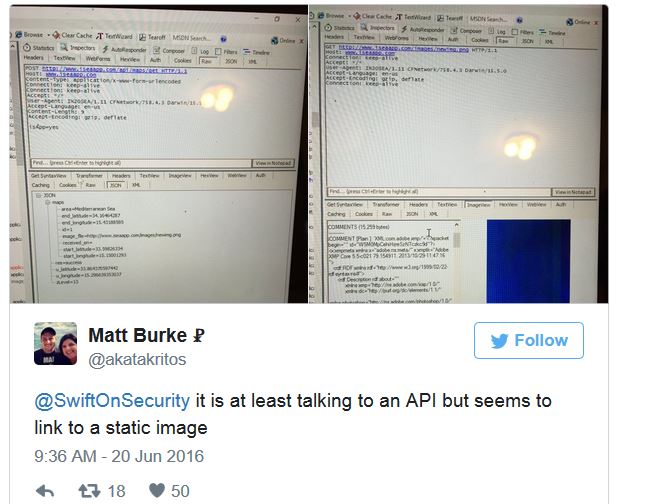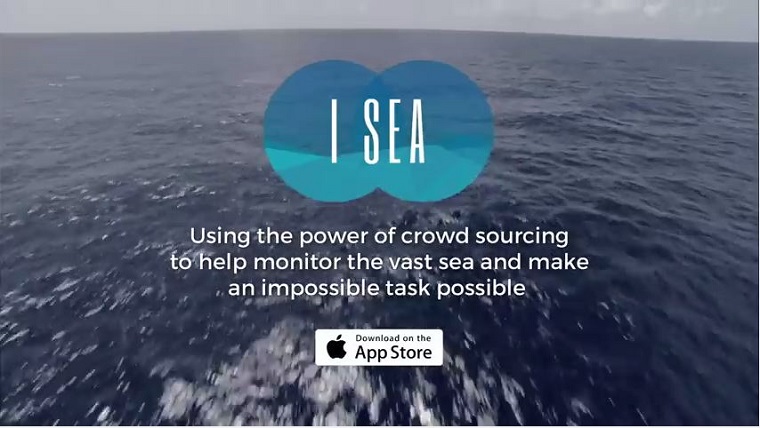Grey Group is one of the largest global communications companies in the world. Recently, their Singapore branch developed an extraordinary app called I Sea, that was immediately hailed as a humanitarian game changer.
The makers definitely thought well of it as well, releasing this soaring, inspirational video to go along with their game changing app.
" width="650" height="385" frameborder="0" allowfullscreen="allowfullscreen">
Here's how the app purportedly worked
1. The app will show a satellite image of the sea
2. Slice the image up into thousands of smaller plots.
3. The plots will be designated to different users, who can monitor for any boat in distress.
4. App users will then inform the charity Migrant Offshore Aid Station (MOAS) who will proceed to send help
The app was hailed as a humanitarian game changer, and branded as a way to save refugees while on your lunch break.
It was critically acclaimed, even clinching a prestigious award at the 2016 Cannes Lions International Festival of Creativity.
And then everyone got angry.
Why the outrage?
Because the app was found to be sorely lacking in the 'actually working' department.
A twitter user, SecuriTay, took apart the 'mechanics' of the app, claiming it was essentially pointless.

And it turns out, SecuriTay might have had a point.
Here is the Internet's point by point debunking of claims the app has put forth.
1. The app will show a satellite image of the sea
Instead of live satellite images, the app showcased what is basically the same exact picture of the ocean.

2. Slice the image into thousands of smaller plots
Some have pointed out that it seems redundant to slice an image of what is essentially nothing, into thousands of smaller nothings.
3. The plots will be designated to different users, who can monitor for any boat in distress
Many reported that their 'individual plots' seemed identical. Some even noted that while it was night time at the pacific ocean, their 'satellite images' showed pictures in the day time. Which could have something to do with the 'satellite images' not being actual satellite images.
4. App users will then inform the charity, Migrant Offshore Aid Station (MOAS), who will proceed to send help
And even if by some miracle, someone were to spot a refugee in trouble, they would not be able to get in touch with one of the few charities dedicated to helping these refugees.
Unlike previously advertised, Grey Group had actually not secured any partnership agreement with MOAS.
"The Migrant Offshore Aid Network did not develop the app with Grey for Good nor do we feel that there [are] any advantages to having the public scan old sat images for potential disasters that in reality unfold in seconds," the spokesperson said."
As of June 24, Apple has removed I Sea from its app store.
In the face of mounting criticism, Grey Group doubled down on their non-functioning app.
In an email interview with Ars Technica, an online tech publication, a Grey Group spokesman, Owen Dougherty, stood firmly behind the company's app. The interview confirmed that "the app was not using real-time satellite imagery."
When asked whether the app seems redundant without real-time satellite data, this was Dougherty's reply.
"The over-arching idea which has been lauded by everyone is the point of all this, has there ever been an app that didn't need to be refined?"
He did not clarify whether 'refined' and 'have to remake from scratch' fell under the same definition.
When pressed on whether any migrants were actually helped by this app.
Dougherty claimed that "Great idea, great strategy... great spotlight on the migrant issue until we were vilified for trying to be of service, 3 out of 4 not bad don't you think?"
Top photo from Grey's Youtube page
If you like what you read, follow us on Facebook and Twitter to get the latest updates.
If you like what you read, follow us on Facebook, Instagram, Twitter and Telegram to get the latest updates.
